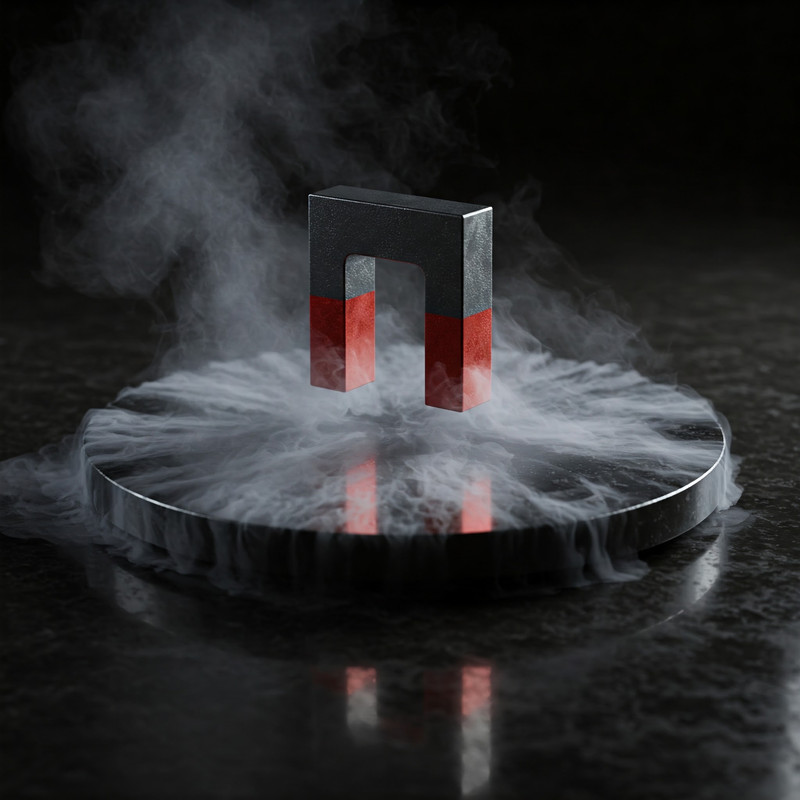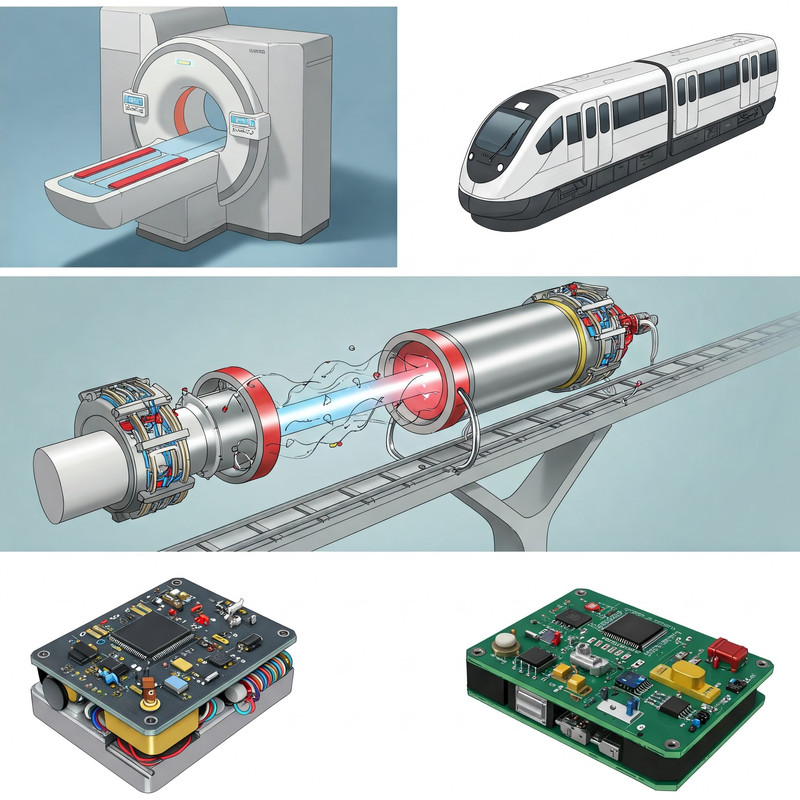The Physics of Superconductors: Unleashing the Power of Zero Resistance
The Physics of Superconductors: Unleashing the Power of Zero Resistance
Imagine a world where power lines lose no energy during transmission, where trains glide silently above tracks, and medical imaging becomes even more precise. This isn't science fiction; it's the promise of superconductivity, a mind-bending phenomenon where certain materials allow electricity to flow with absolutely zero resistance. Buckle up as we dive into the quantum realm to explore the science behind this incredible effect and its revolutionary potential.

The Achilles' Heel of Electricity: Resistance
Everyday electrical conductors, like copper wires, aren't perfect. As electrons flow, they bump into atoms within the material, causing friction and energy loss in the form of heat. This is electrical resistance, and it's the reason your laptop gets warm and power grids lose a significant chunk of energy over long distances. But what if this inherent obstacle could be eliminated?
Enter the Quantum Realm: The Magic of Superconductivity
In 1911, Dutch physicist Heike Kamerlingh Onnes discovered that mercury, when cooled to an incredibly low temperature (just a few degrees above absolute zero), suddenly lost all electrical resistance. This marked the birth of superconductivity. But how does this quantum magic happen?
At these frigid temperatures, something extraordinary occurs at the atomic level. Electrons, the carriers of electrical current, no longer act as individual particles battling their way through the material. Instead, they pair up to form what are known as Cooper pairs.

These Cooper pairs behave like a single quantum entity, moving in perfect synchronization through the material's atomic lattice. Imagine a perfectly coordinated dance where everyone moves in unison, encountering no obstacles. This coordinated movement allows the electrical current to flow unimpeded, resulting in zero resistance.
The Curious Case of Magnetic Fields: The Meissner Effect
Superconductors possess another remarkable property: they actively expel magnetic fields from their interior. This is known as the Meissner effect. If you place a magnet above a superconductor cooled below its critical temperature, the superconductor will generate its own magnetic field to perfectly counteract the magnet's field, causing the magnet to levitate in mid-air! This levitation is a powerful visual demonstration of the unique nature of superconductors.

Two Flavors of Superconductors:
- Type I Superconductors: These were the first discovered superconductors. They exhibit a sharp transition to the superconducting state at a specific critical temperature and completely expel magnetic fields up to a certain critical field strength. Examples include pure metals like mercury, lead, and tin.
- Type II Superconductors: Discovered later, these materials have two critical magnetic fields. Above the first critical field, they allow some magnetic field to penetrate in the form of tiny vortices, while still maintaining zero resistance. They generally have higher critical temperatures and critical fields, making them more suitable for many technological applications. Examples include alloys of niobium and titanium.

High-Temperature Superconductors (HTS): A New Era
The discovery of High-Temperature Superconductors (HTS) has been a pivotal moment in the field. Unlike traditional superconductors that require cooling with expensive liquid helium, HTS materials can operate at higher, though still cryogenic, temperatures achievable with liquid nitrogen. This significantly broadens their potential applications.
Many HTS materials are complex oxides, such as **cuprates** (copper-oxide based ceramics) like YBCO (Yttrium Barium Copper Oxide). These materials exhibit fascinating layered structures and complex electronic behavior that scientists are still unraveling. More recently, **iron-based superconductors**, like iron pnictides and chalcogenides, have also emerged with promising properties and are actively being researched.
Understanding the precise mechanisms behind high-temperature superconductivity remains a major challenge in condensed matter physics, driving intense research efforts worldwide.
Superconductors in Action: Revolutionizing Technology
- Magnetic Resonance Imaging (MRI): Powerful superconducting magnets are crucial for generating the strong and stable magnetic fields needed for detailed medical imaging.
- Magnetic Levitation (Maglev) Trains: Superconducting magnets enable trains to float above the tracks, eliminating friction and allowing for incredibly high speeds and smooth rides.
- Particle Accelerators: Massive superconducting magnets are used in facilities like the Large Hadron Collider (LHC) to steer and focus beams of particles at near the speed of light.
- SQUIDs (Superconducting Quantum Interference Devices): These ultra-sensitive magnetometers can detect incredibly weak magnetic fields, with applications in medical diagnostics (like brain imaging) and fundamental physics research.

Recent Developments: The Quantum Frontier
The field of superconductivity is constantly evolving. Recent research is exploring novel approaches to increase the critical temperatures of superconductors and unlock new possibilities. For instance, studies investigating the role of **quantum geometry** in the electronic structure of materials are showing promise in understanding and potentially enhancing superconducting properties. This fundamental research could pave the way for even more efficient and practical superconducting technologies in the future.
The Future is Superconductive?
Superconductivity, once a mere laboratory curiosity, is steadily moving towards real-world applications that could reshape our technological landscape. From more efficient energy grids to faster transportation and more powerful medical tools, the ability to harness electricity without resistance holds immense promise for a more efficient and technologically advanced future. As research continues to push the boundaries of critical temperatures and our understanding of the underlying quantum phenomena deepens, the dream of a truly "superconductive" world may be closer than we think.
Explore More:
- The Future of Nuclear Fusion: Unlimited Clean Energy?
- AI Weather Control: Can We Predict the Unpredictable?
Contact Author:
More Information:
Enjoyed this post? Share it with your friends! (Social Media Sharing Buttons - Add your platform's sharing code here)
Disclaimer: This blog post provides general information about superconductivity and its potential applications. For specific technical details and the latest research findings, please refer to peer-reviewed scientific literature.
Comments
Post a Comment